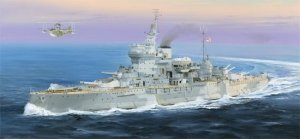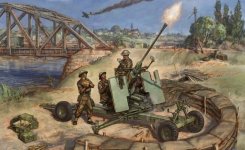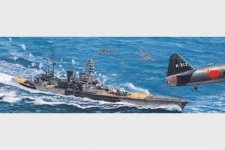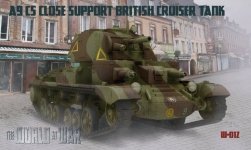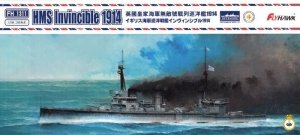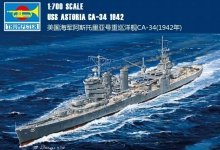Trumpeter 05796 HMS Valiant (1939 version) 1/700
Plastikowy model do sklejania. Zestaw nie zawiera kleju i farb.
HMS Valiant – brytyjski pancernik typu Queen Elizabeth służący w Royal Navy podczas obu wojen światowych. Stępkę położono w stoczni Fairfield, w Govan, 31 stycznia 1913 roku i okręt zwodowano 4 listopada 1914 roku. Budowę ukończono w lutym 1916 roku.W czasie I wojny światowej służył w 5th Battle Squadron dowodzonym przez admirała Hugh Evan-Thomasa. Dywizjon wchodził w skład Grand Fleet i składał się z 5 okrętów typu Queen Elizbeth (były one znacznie szybsze niż inne pancerniki brytyjskie i zdecydowano się je skoncentrować w jednym zespole). 31 maja 1916 roku okręt wziął udział w bitwie jutlandzkiej, gdzie otrzymał kilka trafień. W sierpniu tego samego roku miał kolizję z HMS „Warspite” i był reperowany do końca września.
Pomiędzy 1929 i 1930 rokiem okręt przeszedł dużą przebudowę. Dodano bąble przeciwtorpedowe, zwiększono szerokość do 31,7 metra. Dwa kominy zostały połączone w jeden. Dodano pojedyncze ośmiolufowe działo dwufuntowe Mark VIII. Dwie wyrzutnie torpedowe zostały usunięte. Dodano platformę lotniczą wraz z jedną katapultą. Te modyfikacje zwiększyły maksymalną wyporność do 35 970 ton.
W 1931 roku załoga pancernika uczestniczyła w buncie w Invergordon.
W roku 1936 dodano drugą baterię ośmiu dział dwufuntowych. Pomiędzy marcem 1937 i listopadem 1939 roku pancernik przeszedł drugą poważną przebudowę w Devonport. Kotłownie wyposażono w osiem kotłów połączonych z czterema turbinami parowymi systemu Parsonsa. Całość miała moc 80 000 koni parowych. Maksymalny zapas ropy to 3393 ton. Maksymalna prędkość wzrosła do 23,5 węzła - zwiększono moc, ale zwiększyła się też wyporność i zanurzenie. Artyleria pomocnicza została zmieniona na 20 dział kalibru 114 mm umieszczonych w podwójnych wieżach oraz cztery ośmiolufowe działa dwufuntowe. Te modyfikacje zwiększyły zanurzenie do 10 metrów i maksymalną wyporność do 36 513 ton.
HMS Valiant was one of five Queen Elizabeth-class battleships built for the Royal Navy during the early 1910s. She participated in the Battle of Jutland during the First World War as part of the Grand Fleet. Other than that battle, and the inconclusive Action of 19 August, her service during the war generally consisted of routine patrols and training in the North Sea. She saw further action during the Second World War in the Mediterranean and Far East.The Queen Elizabeth-class ships were designed to form a fast squadron for the fleet that was intended to operate against the leading ships of the opposing battleline. This required maximum offensive power and a speed several knots faster than any other battleship to allow them to defeat any type of ship.
Valiant had a length overall of 643 feet 9 inches (196.2 m), a beam of 90 feet 7 inches (27.6 m) and a deep draught of 33 feet (10.1 m). She had a normal displacement of 32,590 long tons (33,110 t) and displaced 33,260 long tons (33,794 t) at deep load. She was powered by two sets of Brown-Curtis steam turbines, each driving two shafts, using steam from 24 Yarrow boilers. The turbines were rated at 75,000 shp (56,000 kW) and intended to reach a maximum speed of 24 knots (44.4 km/h; 27.6 mph). Valiant had a range of 5,000 nautical miles (9,260 km; 5,754 mi) at a cruising speed of 12 knots (22.2 km/h; 13.8 mph). Her crew numbered 919 officers and ratings in 1916 and 1,218 in 1919.
The Queen Elizabeth class was equipped with eight breech-loading (BL) 15-inch (381 mm) Mk I guns in four twin gun turrets, in two superfiring pairs fore and aft of the superstructure, designated 'A', 'B', 'X', and 'Y' from front to rear. Twelve of the fourteen BL 6-inch (152 mm) Mk XII guns were mounted in casemates along the broadside of the vessel amidships; the remaining pair were mounted on the forecastle deck near the aft funnel and were protected by gun shields. Their anti-aircraft (AA) armament consisted of two quick-firing (QF) 3-inch (76 mm) 20 cwt Mk I guns. The ships were fitted with four submerged 21 inch (533 mm) torpedo tubes, two on each broadside.

















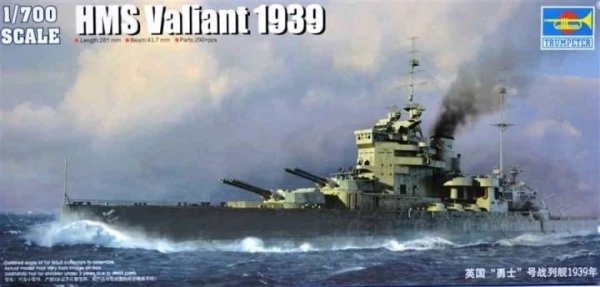
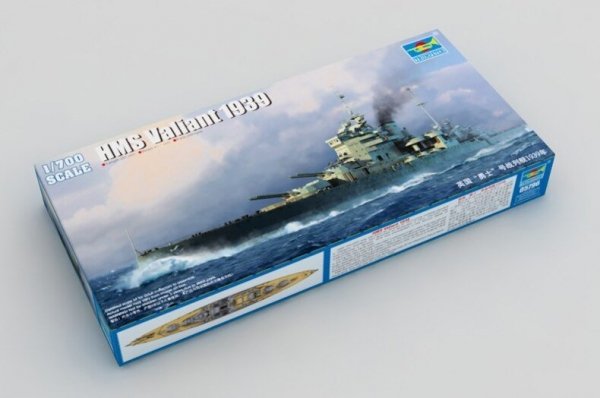
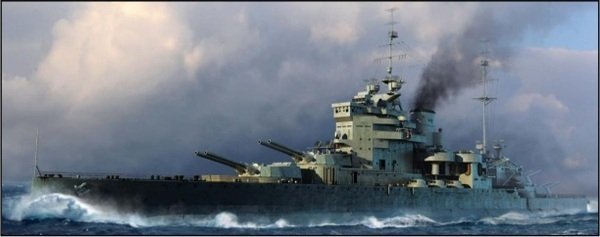
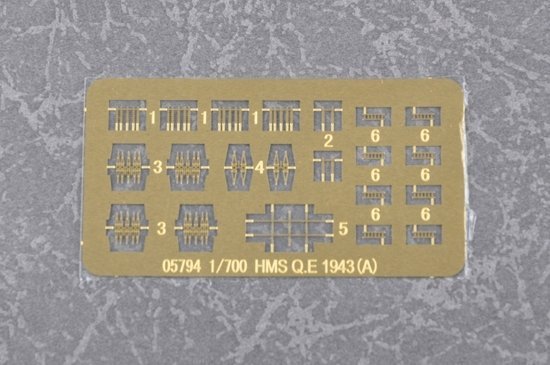
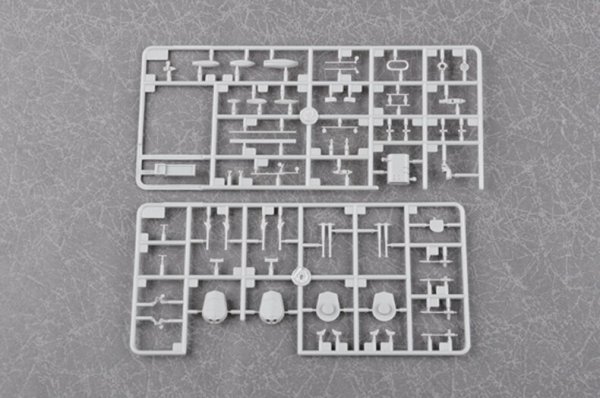
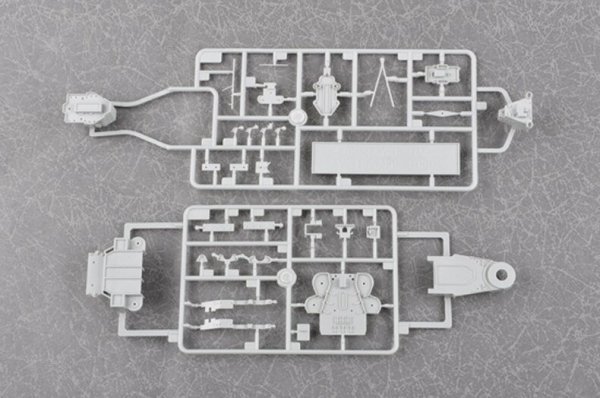
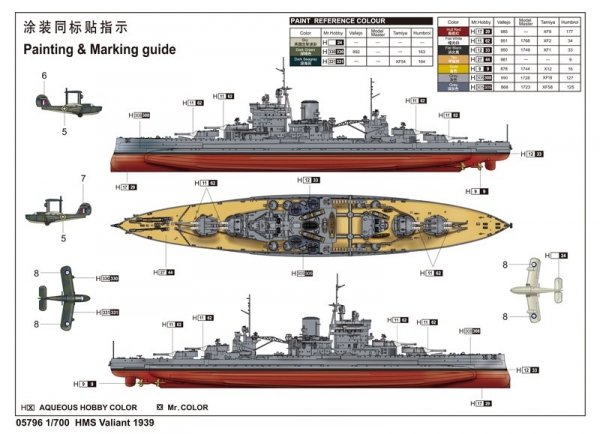
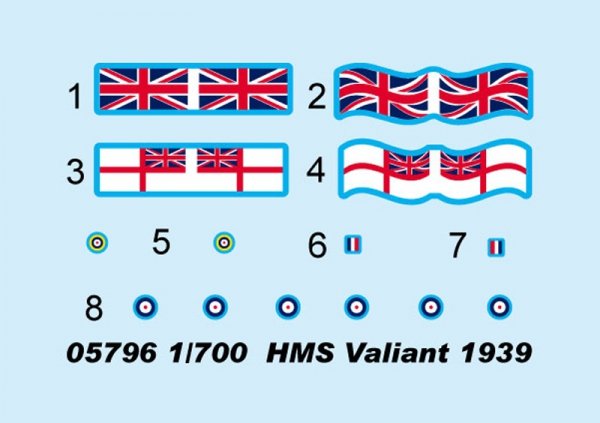
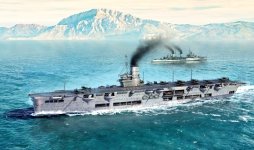
 1 szt.
1 szt.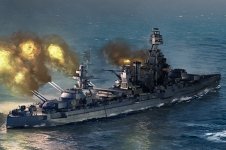
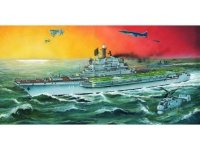
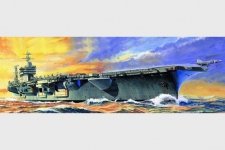
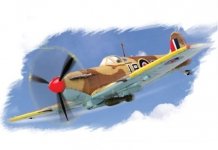
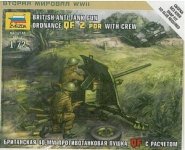
 2 szt.
2 szt.